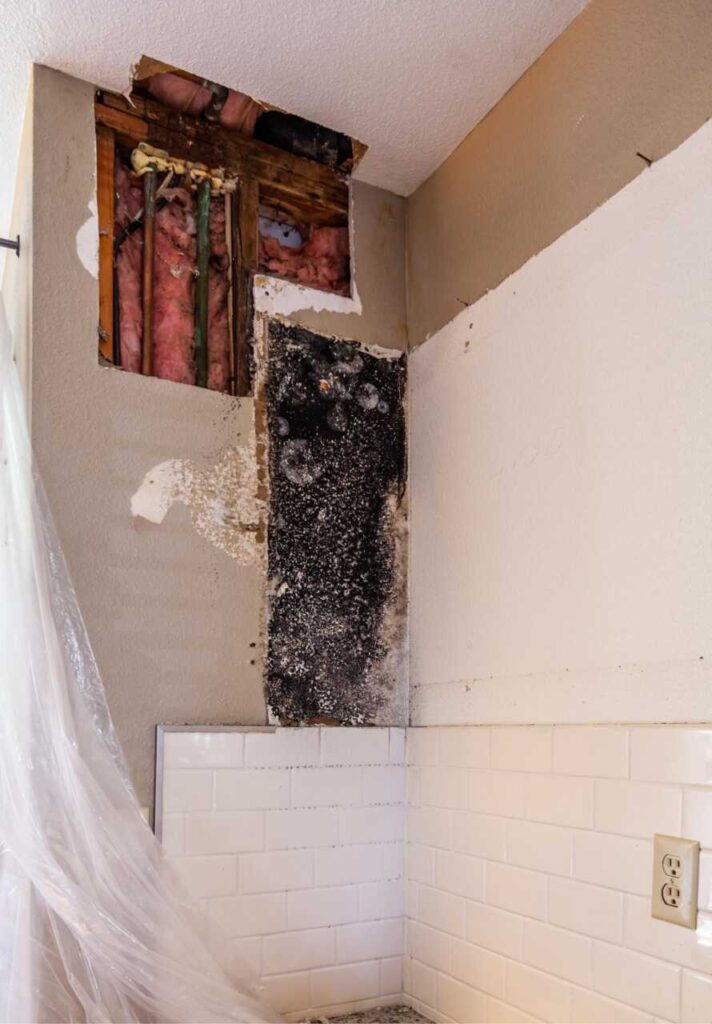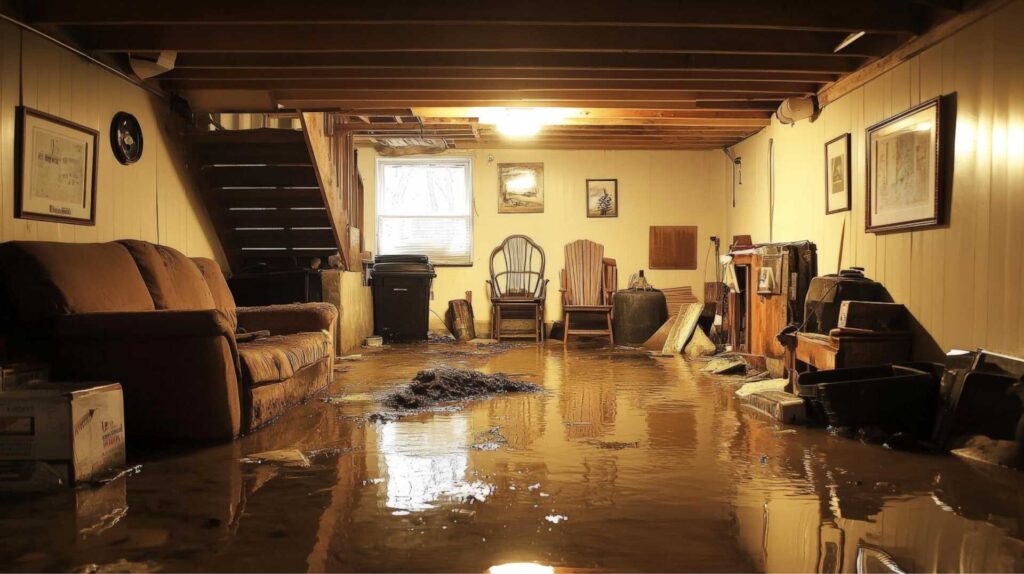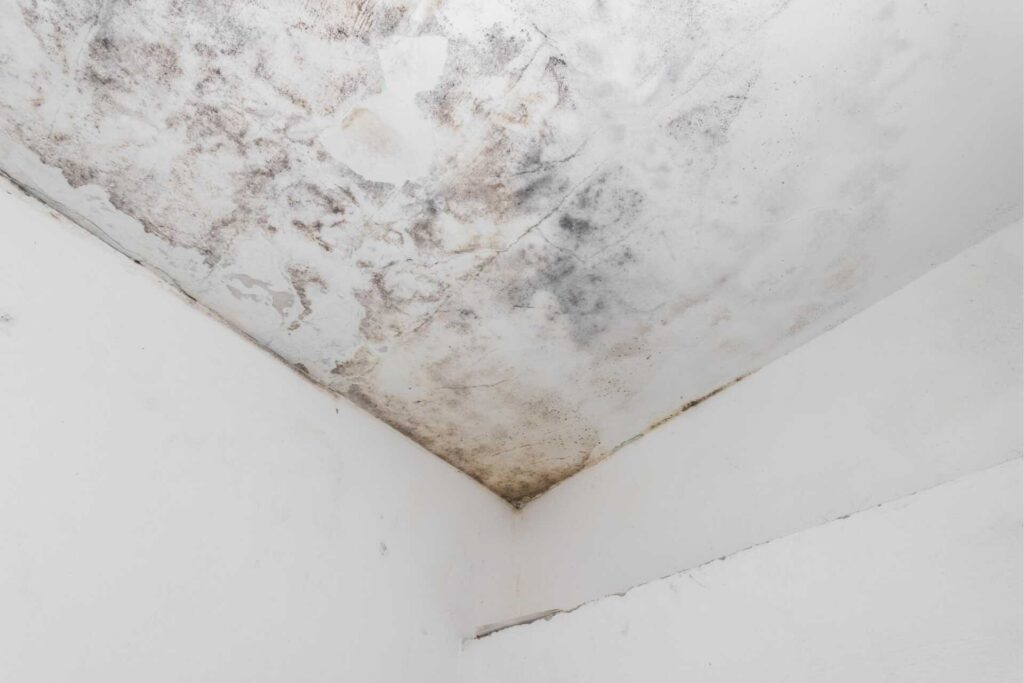
Contents
Mold can begin to grow within 24 to 48 hours after water damage, making timely intervention critical. Understanding the most effective remediation strategies is vital for preventing extensive damage and health risks. By addressing the moisture source and employing proper cleanup techniques, you can greatly reduce mold growth. However, knowing where to start can be overwhelming. Let’s explore the essential steps you should take to ensure a mold-free environment.
Key Takeaways
- Identify and address the source of moisture to prevent mold recurrence, inspecting areas like basements and plumbing thoroughly.
- Ensure proper ventilation by using exhaust fans and keeping humidity levels below 60% with a hygrometer.
- Use dehumidifiers in high-moisture areas, maintaining humidity between 30% and 60% for optimal effectiveness.
- Remove affected materials promptly and clean surfaces with appropriate solutions, allowing them to dry completely to prevent regrowth.
- Consider professional help for persistent mold issues and apply mold inhibitors to create protective barriers against future growth.
Identifying the Source of Moisture
Moisture is the primary catalyst for mold growth, making its source vital to effective remediation. To tackle mold issues, you need to identify where the moisture originates. Common sources include leaky roofs, burst pipes, and high humidity levels.
Begin by inspecting your home thoroughly; check areas like basements, bathrooms, and around appliances for signs of water damage. Use a moisture meter to quantify dampness in walls and floors, as this can reveal hidden issues.
Pay attention to any unusual odors, which often indicate mold presence. If you find mold, don’t just clean the surface; addressing the underlying moisture source is essential to prevent recurrence.
Be proactive—fix leaks and ensure proper drainage around your home. By pinpointing the moisture source, you’ll enhance your living environment and foster a sense of community by sharing your knowledge with neighbors facing similar challenges.
Ensuring Proper Ventilation
While addressing moisture issues is vital, ensuring proper ventilation is equally important in preventing mold growth. Adequate airflow reduces humidity levels, making it difficult for mold spores to thrive.
Start by opening windows and doors when possible, allowing fresh air to circulate. If your space lacks natural ventilation, consider installing exhaust fans in areas prone to moisture, like bathrooms and kitchens.
It’s also imperative to keep vents clear of obstructions. Furniture, drapes, and other items can block airflow, creating stagnant conditions ideal for mold. Regularly check and maintain your HVAC system to confirm it’s functioning effectively.
Additionally, during and after water damage, aim to keep indoor humidity levels below 60%. Using fans can help increase air circulation, further reducing moisture.
Using Dehumidifiers Effectively
Using dehumidifiers effectively can greatly reduce humidity levels in your home, creating an inhospitable environment for mold. To maximize their performance, place dehumidifiers in areas with the highest moisture, like basements or bathrooms.
Confirm they’re set to maintain indoor humidity between 30% and 60%, as this range is ideal for preventing mold growth.
Regularly empty the water reservoir or connect a drain hose to enhance efficiency. If your home has multiple levels, consider using several units to ensure consistent humidity control throughout.
Clean the dehumidifier’s filters regularly to maintain airflow and functionality.
Monitor humidity levels using a hygrometer, which can provide real-time data on your home’s moisture levels.
Consistent use of dehumidifiers aids in mold prevention and improves overall indoor air quality, fostering a healthier living environment for you and your family.
Removing Affected Materials
To effectively remove materials affected by mold, you must first assess the severity of the damage.
This evaluation helps determine which items can be salvaged and which need to be disposed of safely.
Following proper disposal methods is essential to prevent further contamination and ensure a thorough remediation process.
Assessing Damage Severity
As you begin evaluating damage severity after water intrusion, it is crucial to identify and remove affected materials promptly to prevent mold growth. Start by determining the extent of damage to various materials, as different types react differently to moisture.
| Material Type | Damage Severity Level |
|---|---|
| Drywall | Moderate to Severe |
| Wood | Moderate |
| Carpet | High |
| Insulation | Severe |
| Personal Items | Variable |
Evaluate these materials based on their moisture absorption capabilities. For instance, drywall may need complete replacement once saturated, while wood might only require drying. Acting quickly ensures you minimize mold proliferation and maintain a safe environment.
Safe Disposal Methods
After identifying the extent of damage, it’s crucial to implement safe disposal methods for affected materials to mitigate mold risk.
Start by wearing protective gear, including gloves and masks, to prevent exposure to mold spores. Remove materials like drywall, insulation, and carpeting that can’t be cleaned effectively.
Seal these items in heavy-duty plastic bags before disposal to contain any spores. Check local regulations for hazardous waste disposal, as some materials may require special handling.
Additionally, confirm that the disposal area is well-ventilated to minimize inhalation risks. By following these guidelines, you will safeguard your health and foster a cleaner, mold-free environment for everyone in your space.
Cleaning and Disinfecting Surfaces
When addressing mold after water damage, effective cleaning solutions are essential for eliminating spores from surfaces.
You’ll need to employ appropriate disinfecting techniques tailored to various materials to ensure thorough remediation.
Understanding the specific considerations for each surface type will enhance your overall cleaning strategy.
Effective Cleaning Solutions
To effectively combat mold-following water damage, you need to employ targeted cleaning solutions that remove visible spores and disinfect surfaces to prevent future growth.
Start with a mixture of water and detergent for porous materials, as it helps lift dirt and mold without causing damage. For non-porous surfaces, consider using a solution of water and white vinegar or a commercially available mold cleaner. Both options have proven efficacy against mold and bacteria.
Confirm you scrub the affected areas thoroughly, then rinse with clean water. After cleaning, allow surfaces to dry completely, as moisture encourages mold regrowth.
Disinfecting Techniques Overview
Cleaning surfaces is only the first step in mold remediation; effective disinfecting techniques are vital for ensuring long-term protection against mold recurrence. After you’ve cleaned, it’s important to apply appropriate disinfectants to eliminate any remaining spores.
| Disinfecting Technique | Effectiveness |
|---|---|
| Hydrogen Peroxide | High |
| Vinegar | Moderate |
| Bleach | High |
When using these disinfectants, make sure you’re following the manufacturer’s instructions for proper dilution and application. Additionally, allow adequate contact time for the disinfectant to work effectively. Remember, achieving a mold-free environment isn’t just about removing visible signs; it’s about preventing future growth through diligent cleaning and disinfecting practices. Your efforts can create a safer, healthier space for everyone.
Surface Material Considerations
Understanding the specific surface materials in your environment is essential for effective cleaning and disinfecting during mold remediation.
Different materials require tailored approaches to ensure the thorough eradication of mold spores while preserving the integrity of the surfaces.
Here are four key considerations:
Porous Surfaces: Materials like drywall and carpet can absorb moisture, necessitating replacement if heavily infested.
Non-Porous Surfaces: Items such as glass and metal can be effectively cleaned with commercial disinfectants.
Wood Surfaces: Sealed wood can be cleaned, but unsealed wood may require deeper treatment to prevent mold growth.
Textiles: Fabrics should be washed at high temperatures or discarded if contamination is severe.
Applying Mold Inhibitors
While thorough cleanup after water damage is essential, applying mold inhibitors can greatly enhance your efforts to prevent mold growth.
These specialized products contain bioactive compounds that disrupt mold spores’ ability to thrive. You’ll find options like antimicrobial sprays and paints that kill existing spores and provide a protective barrier against future infestations.
When choosing a mold inhibitor, consider its efficacy and safety. Look for EPA-approved solutions that are low in VOCs, ensuring you and your family remain safe during application.
It’s also vital to apply these inhibitors to both porous and non-porous surfaces, as mold can penetrate various materials.
Regularly inspect treated areas for signs of mold, as no product ensures permanent protection. By incorporating mold inhibitors into your remediation strategy, you create a more resilient environment, ensuring your home remains a safe and welcoming space for everyone.
Monitoring Humidity Levels
How can you effectively control mold growth in your home? One of the most critical factors is monitoring humidity levels. Mold thrives in damp environments, so keeping humidity below 60% can greatly reduce its growth.
Here are four strategies to help you manage humidity effectively:
Use a Hygrometer: Invest in a hygrometer to measure indoor humidity accurately.
Ventilate Your Home: Open windows and use exhaust fans in kitchens and bathrooms to promote airflow.
Seal Leaks: Inspect for and repair any leaks in roofs, walls, or plumbing to prevent moisture accumulation.
Utilize Dehumidifiers: If humidity levels remain high, consider using dehumidifiers to extract excess moisture from the air.
Seeking Professional Help When Necessary
Monitoring humidity levels is essential, but sometimes, the situation calls for more than just personal intervention. If you notice persistent mold growth despite your best efforts, seeking professional help is imperative. Experts can assess the extent of the damage using specialized tools to detect hidden mold that you might overlook.
Professionals are trained to handle hazardous materials safely and efficiently, reducing potential health risks associated with mold exposure. They often employ advanced remediation techniques and equipment that aren’t available to the average homeowner.
Moreover, professional remediation can save you time and money in the long run. Ignoring severe mold issues can lead to structural damage and health complications, making it essential to act swiftly.
Wrap-Up
In the battle against mold, it’s ironic how a simple leak can turn your home into a thriving ecosystem for fungi. By promptly addressing moisture sources, ensuring ventilation, and using dehumidifiers, you can reclaim your space from nature’s unwelcome guests. However, ignoring these steps is like inviting mold to a party—it’ll only grow and multiply. Stay vigilant, monitor humidity, and don’t hesitate to call in the pros if needed. Your home deserves better than a moldy welcome mat.

